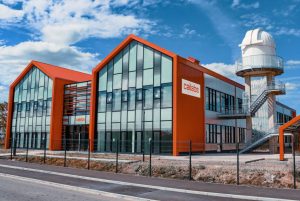Freeform beam shaping with multi-plane light conversion for 1.07 µm ultra-high throughput laser-based material macroprocessing
ICALEO Congress (2019)
Authors: Matthieu Meunier1, Andreas Otto2, Rodrigo Gómez Vázquez2, Jorge Arias3, Roberto Fernández3, Gwenn Pallier1, Pu Jian1, Olivier Pinel1, Guillaume Labroille1
1 Cailabs, 38 boulevard Albert 1er, 35200 Rennes, FRANCE
2 Technische Universität Wien, Vienna, AUSTRIA
3 Asociación de Investigación Metalúrgica del Noroeste (AIMEN), Porriño, SPAIN
Abstract
High-power laser-based macro-processing applications are numerous among all fields of industry. A proper intensity shaping of these beams is key for the improvement of those processes. Indeed, beam shaping allows yield improvement by scrap reduction for Laser Beam Welding (LBW) and allows processing of new material leading to parts’ weight reduction with Selective Laser Melting (SLM).
With the CUSTODIAN project, as part of H2020 European program, a methodology for tailoring the beam shape based on the desired material microstructure is being developed, which shall help to solve current hot cracking issues in LBW and SLM. The methodology includes metallurgical studies and multi-physics simulations in order to define the characteristics to be matched by a beam shape. A general description of the numerical study will be presented alongby.
Thanks to Multi-Plane Light Conversion (MPLC) the tailoring of beam shape is very flexible. MPLC is an innovative technique for beam shaping based on the iterative modification of the beam transverse profile after successive reflections onto a phase plate. The theoretically lossless transformation allows obtaining complex beam shapes with high control over amplitude and phase. We describe here the beam shaping capabilities that allow the widest range of possible energy profiles for LBW and SLM applications in accordance with targeted intensity profiles. Thereby the free-from and high fidelity of the MPLC will be demonstrated.
Dealing with high-power lasers demands a specific design to evacuate the heat by maintaining the performance over a long time. A specific MPLC configuration has been developed to withstand the high power needed for such processes. Continuous high-power tests have been performed on a MPLC module up to 3kW over one hour. We describe the main features of the MPLC setup and demonstrate its capability to work properly and safely at high power, with high stability even for very long processing times.
